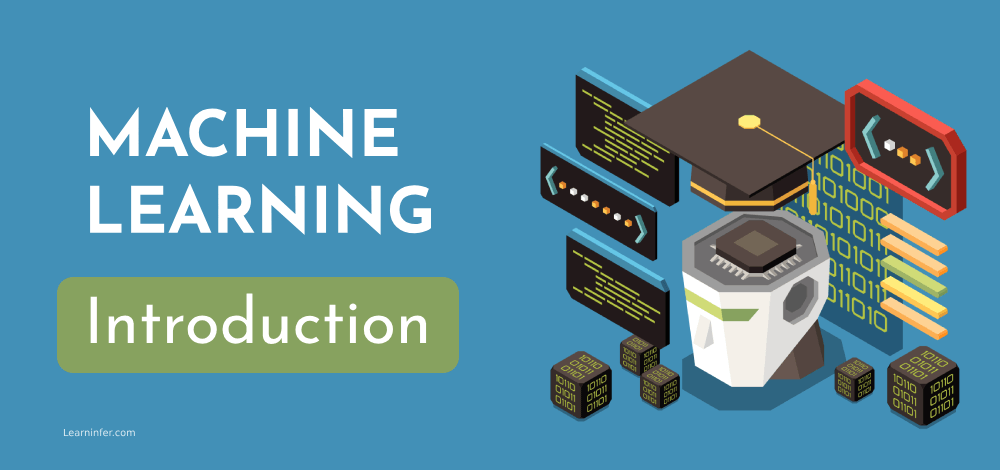
Machine learning is a transformative field of AI, which involves teaching computers to recognize and learn patterns in data, enabling them to make decisions and predictions without explicit programming. It adapts and evolves itself to enhance performance on a given task by understanding the pattern through iterative learning.
We now know that machines can actually learn using data and make actions accordingly, but how it is done ? To know more about it let’s understand the process involved in machine learning
Understand the business Problem
The initial and important phase in machine learning in this phase you have to understand the data, domain and collaborate with the stakeholders/clients to get the actual business problem which needs to be solved using machine learning or deep learning.
Understanding the data
Data can be provided by the business with the help of a data engineer, or you may need to extract it manually from multiple sources. Once the data is acquired, analyze it to understand and perform data preprocessing and cleanup. Conduct exploratory data analysis to grasp the significance and correlations of each feature/attribute. Perform feature engineering and prepare the dataset for further processing.
Choosing the correct approach
Based on the problem that needs to be solved, choose an approach or model.
Training Phase
During the training phase, machines are exposed to the preprocessed dataset. They will analyze the patterns in the data and adjust their internal parameters to learn and generalize from the information.
Testing Phase
In the testing phase, the machine applies its learned knowledge to new or unseen data to assess its predictive or decision-making capabilities. This helps gauge how well the model generalizes to real-world scenarios.
Feedback and Adjustments
Machines receive feedback based on their performance on the test data. If errors occur, the model adjusts its parameters to enhance accuracy and effectiveness.
Prediction or Decision-Making
In real-world applications, the trained machine learning model is deployed to make predictions or decisions based on new, unseen data, leveraging the patterns learned during the training phase.
Machine learning has evolved over time to accommodate complex processing, with multiple approaches that can be used for almost all types of real-time tasks. Before delving into the types and concepts of machine learning, it is better to brainstorm your understanding in the below statistics.
- Linear Algebra: Vectors and matrices & Eigenvalues and eigenvectors
- Calculus: Derivatives and integrals & Partial derivatives
- Statistics:Probability theory & Statistical distributions
- Differential Equations: Understanding of basic differential equations
- Optimization: Gradient descent & Convex optimization
- Discrete Mathematics: Set theory & Graph theory
- Probability Theory: Bayes’ theorem
Types of Machine Learning Algorithms
There are multiple machine learning algorithms which can be chosen based on the applicability to the given business problem. Machine learning algorithms can be categorized into three main types:
Supervised Learning
Supervised learning uses labeled data to train models to perform specific tasks, such as classification or regression. The model learns from the input-output pairs in the training data to make predictions or decisions based on new, unseen data.
Example Algorithms:
- Linear Regression
- Logistic Regression
- Support Vector Machines (SVM)
- Decision Trees
- Random Forests
Unsupervised Learning
Unsupervised learning deals with unlabeled data, aiming to find hidden patterns or groupings within the data. It is used when we do not have predefined labels for the data.
Example Algorithms:
- K-Means Clustering
- Hierarchical Clustering
- Principal Component Analysis (PCA)
- t-Distributed Stochastic Neighbor Embedding (t-SNE)
Reinforcement Learning
Reinforcement learning involves training agents to make sequences of decisions by rewarding desired behaviors and penalizing undesired ones. The agent learns to maximize cumulative rewards through trial and error.
Example Algorithms:
- Q-Learning
- Deep Q-Networks (DQN)
- Policy Gradient Methods
- Actor-Critic Methods
In summary, machine learning is a powerful technology transforming industries by enabling computers to learn from data and make decisions. Understanding its basics—such as algorithms, data handling, and model training—sets the stage for deeper exploration. As you venture into this field, remember that continuous learning and experimentation are key. Whether you’re aiming to enhance your skills or apply machine learning in practical scenarios, the journey begins with grasping these foundational concepts. Embrace the opportunities and challenges that come with machine learning, and you’ll be well-equipped to contribute to its exciting future.